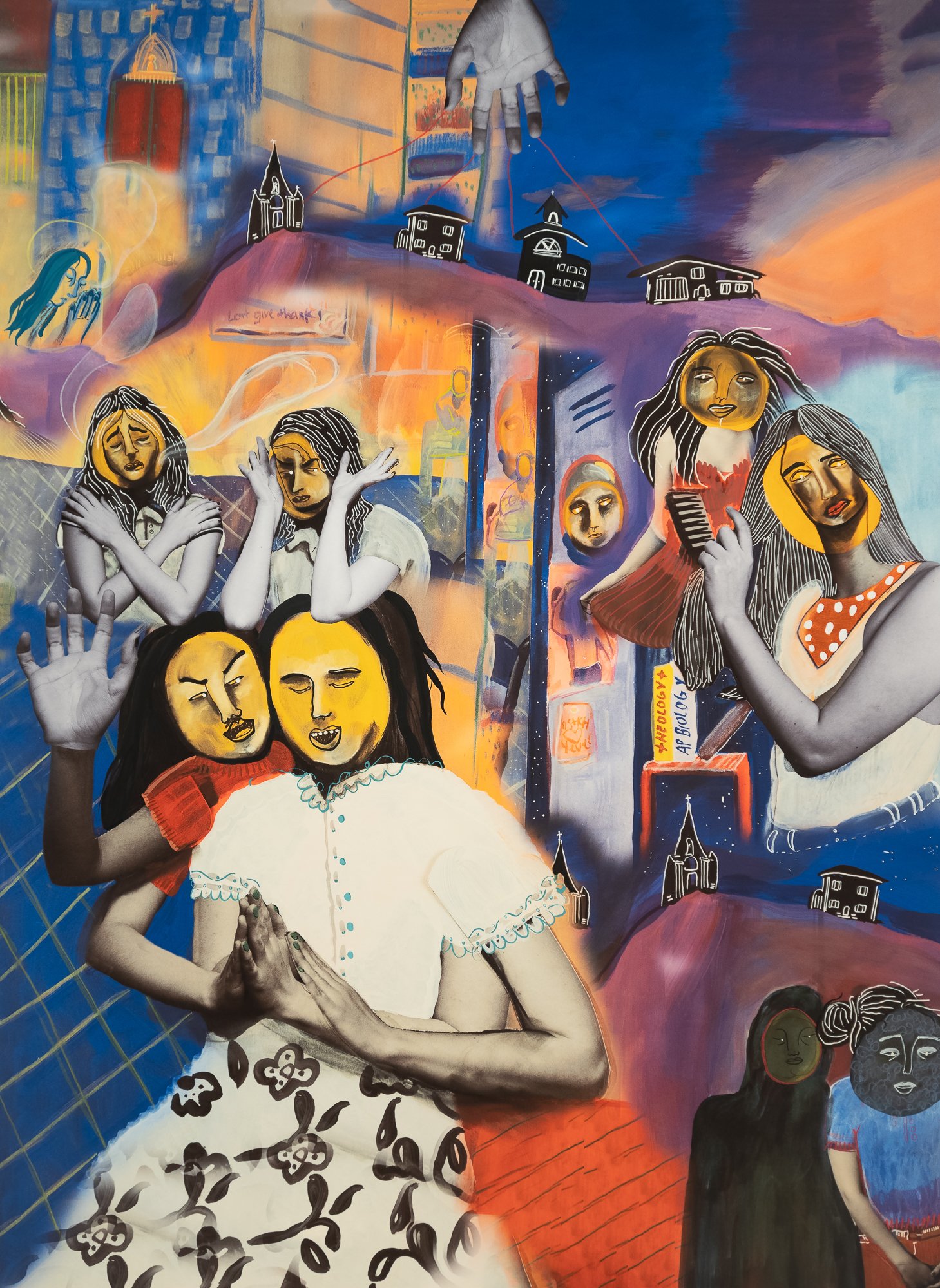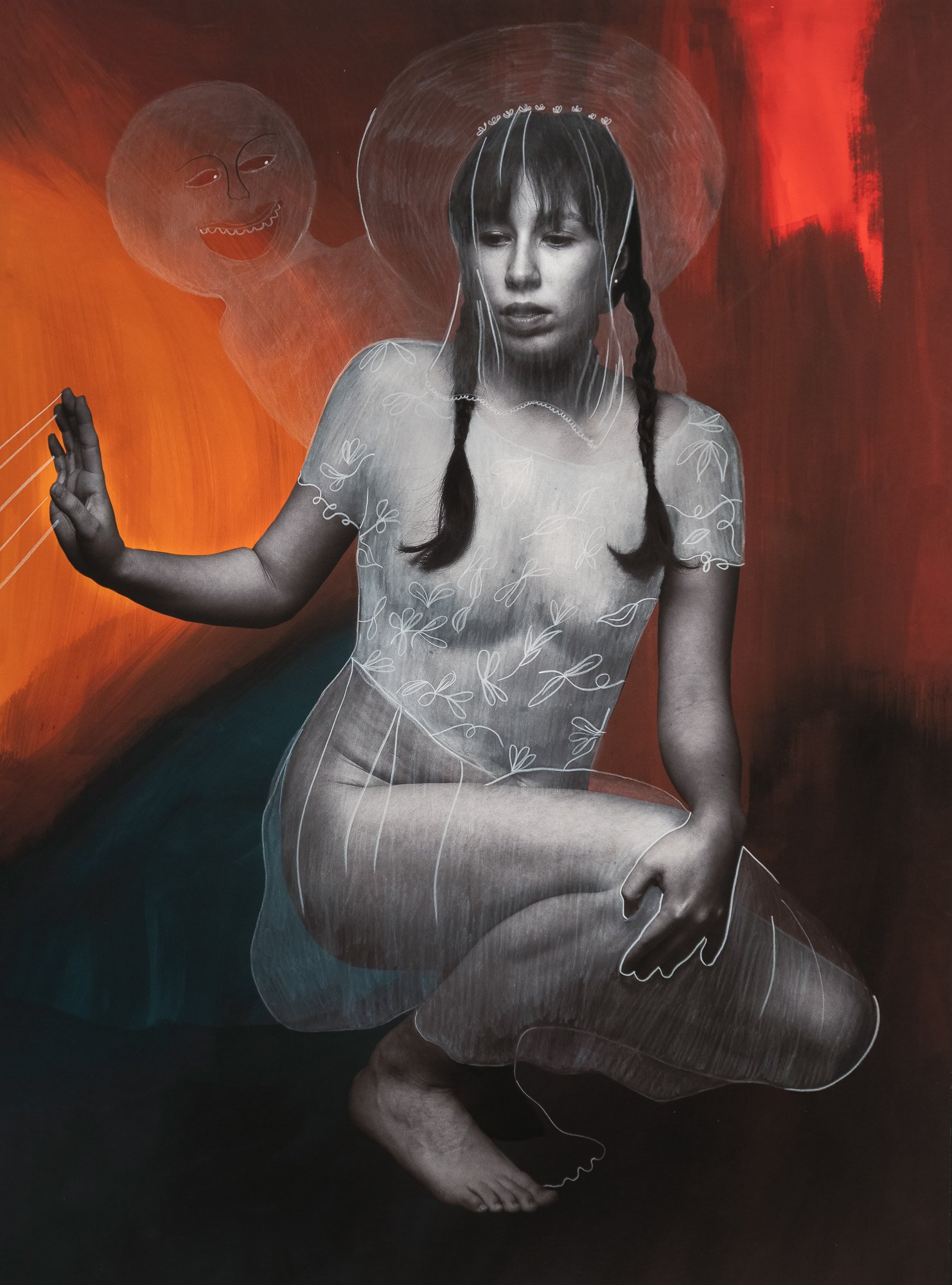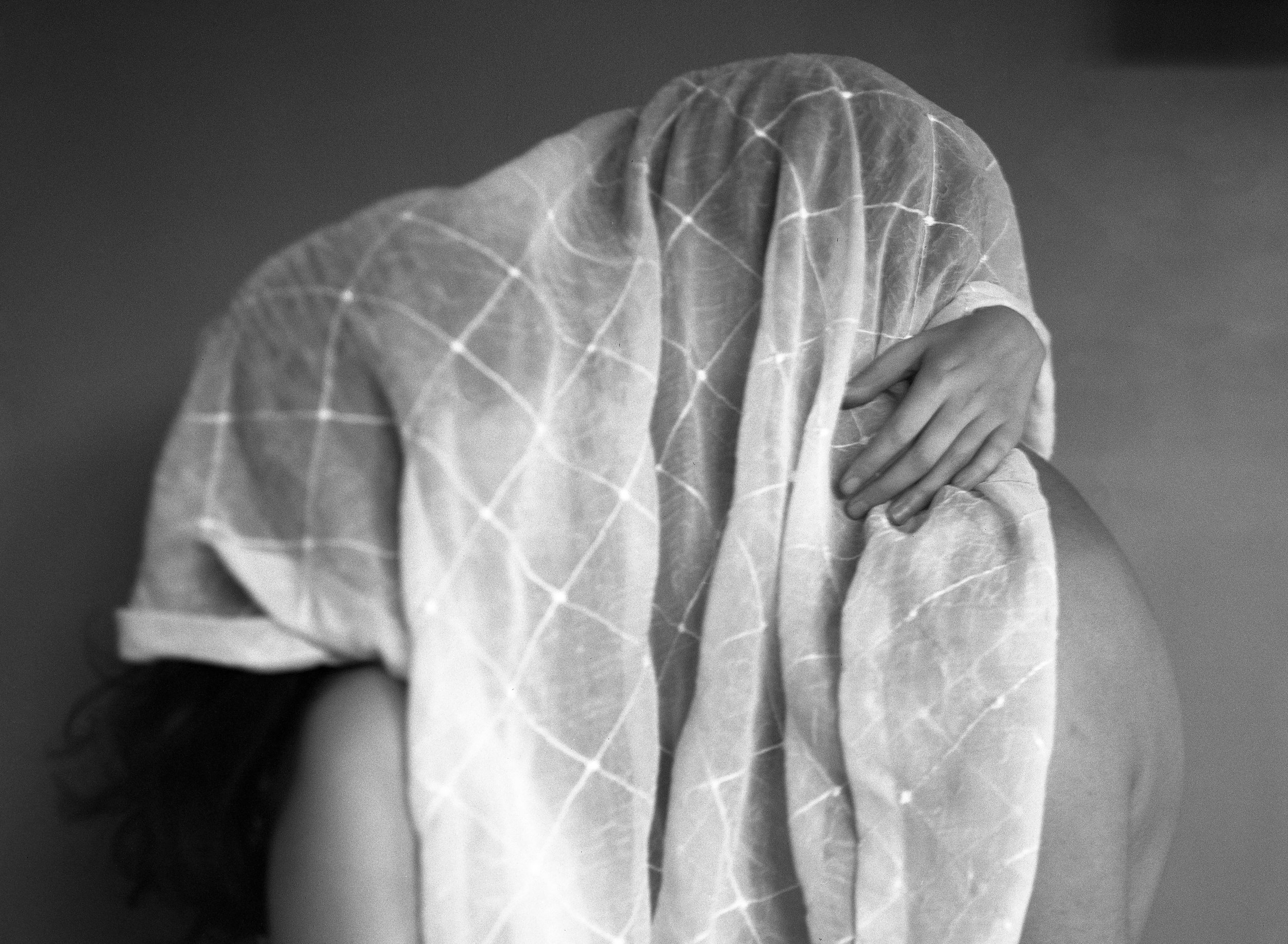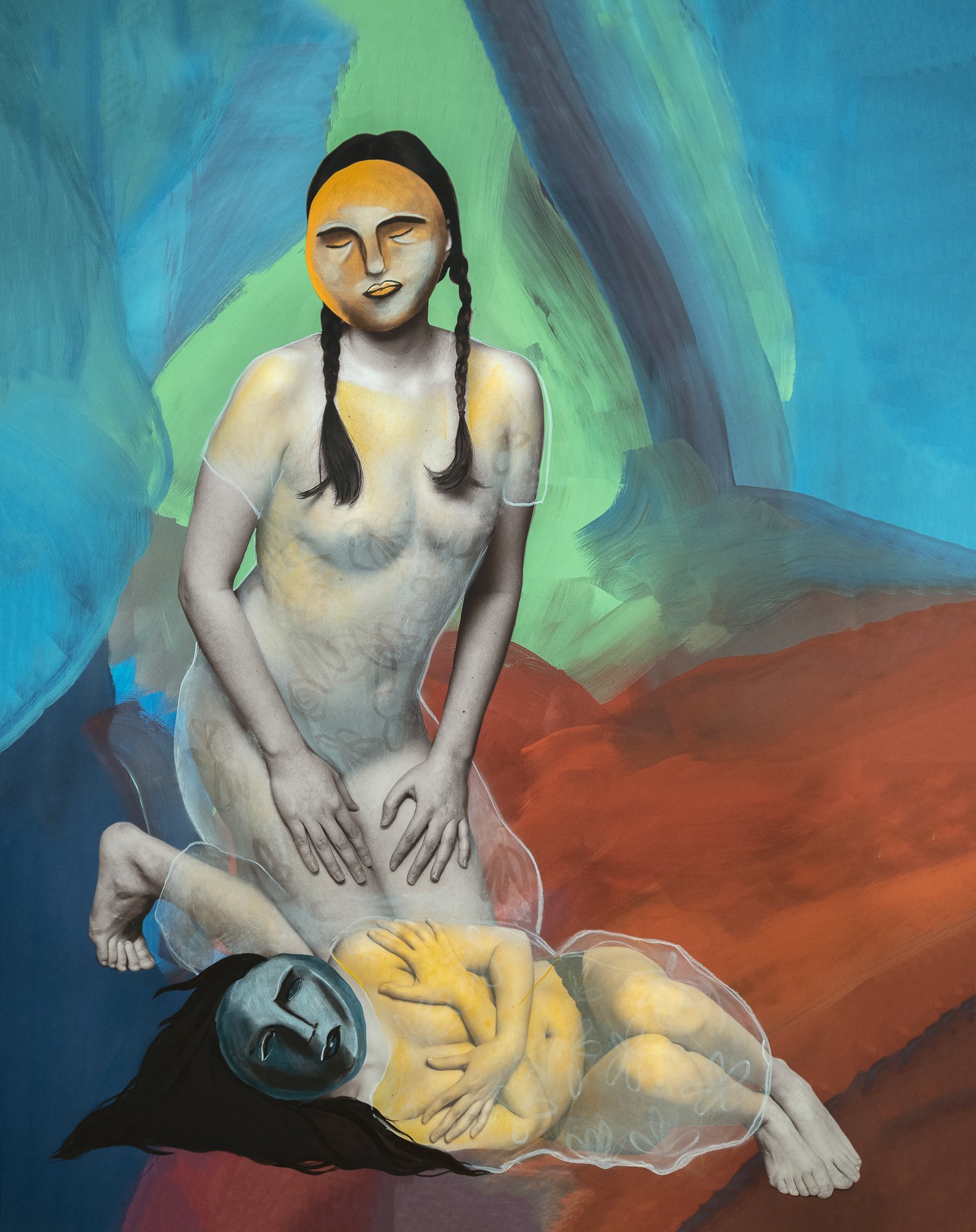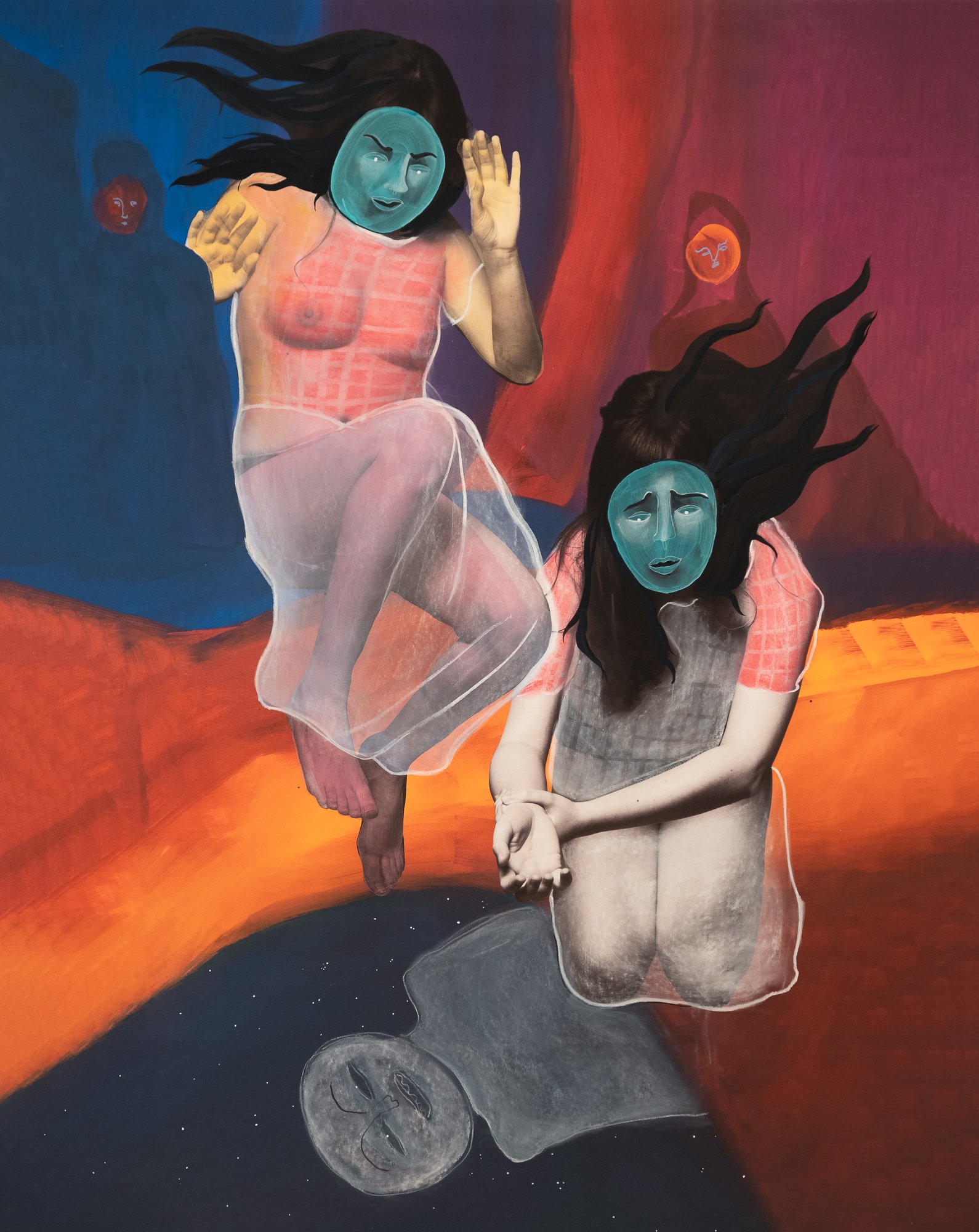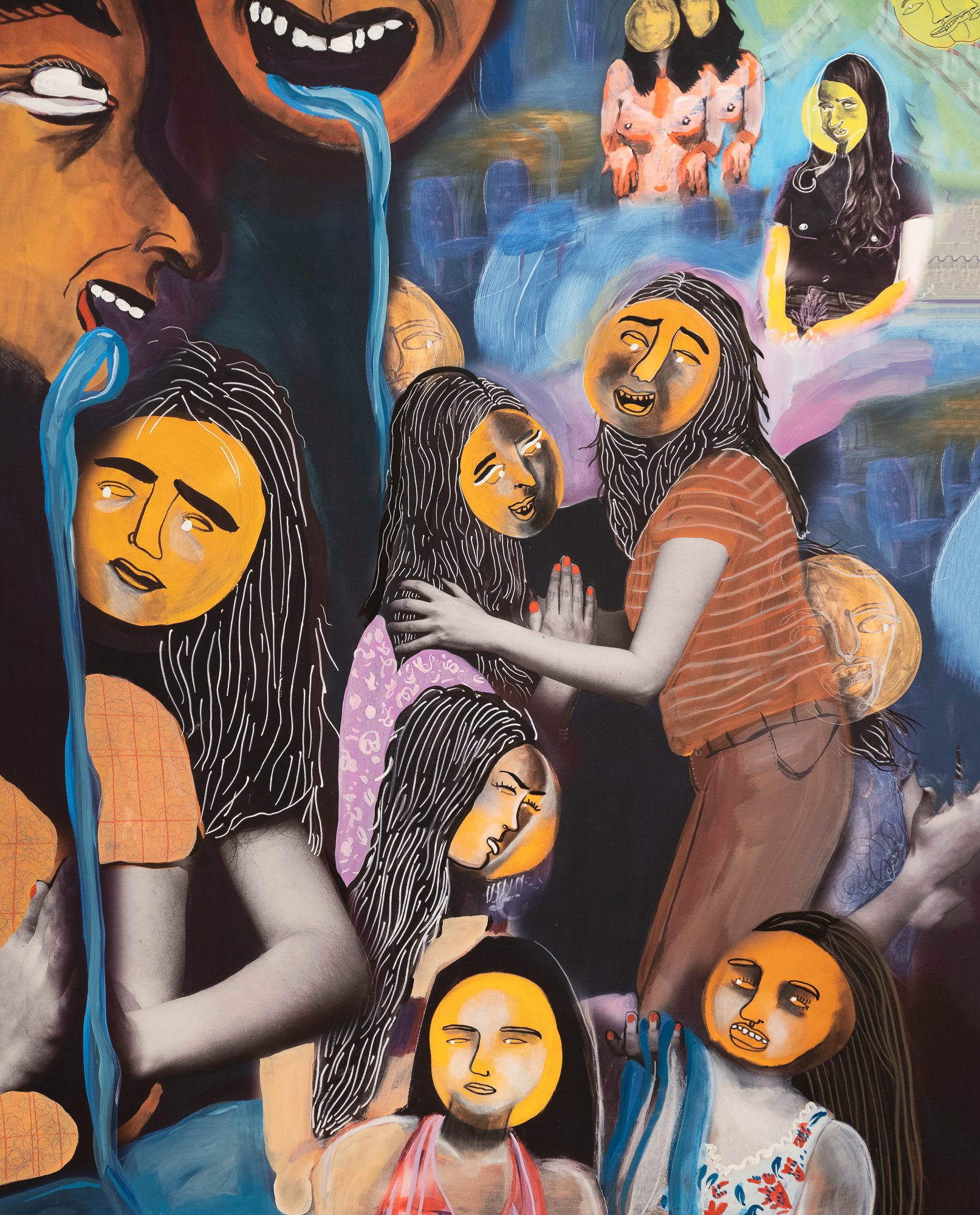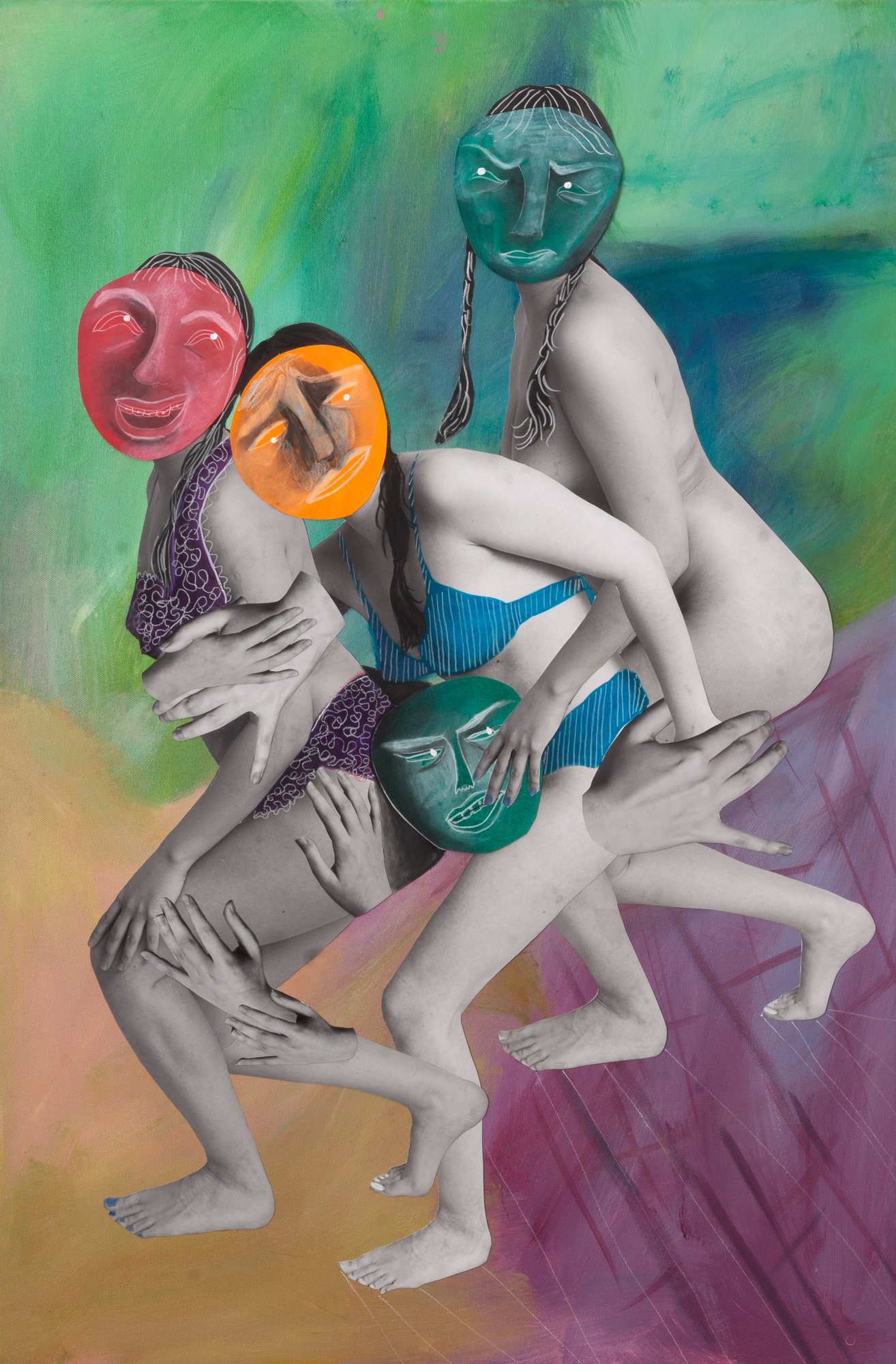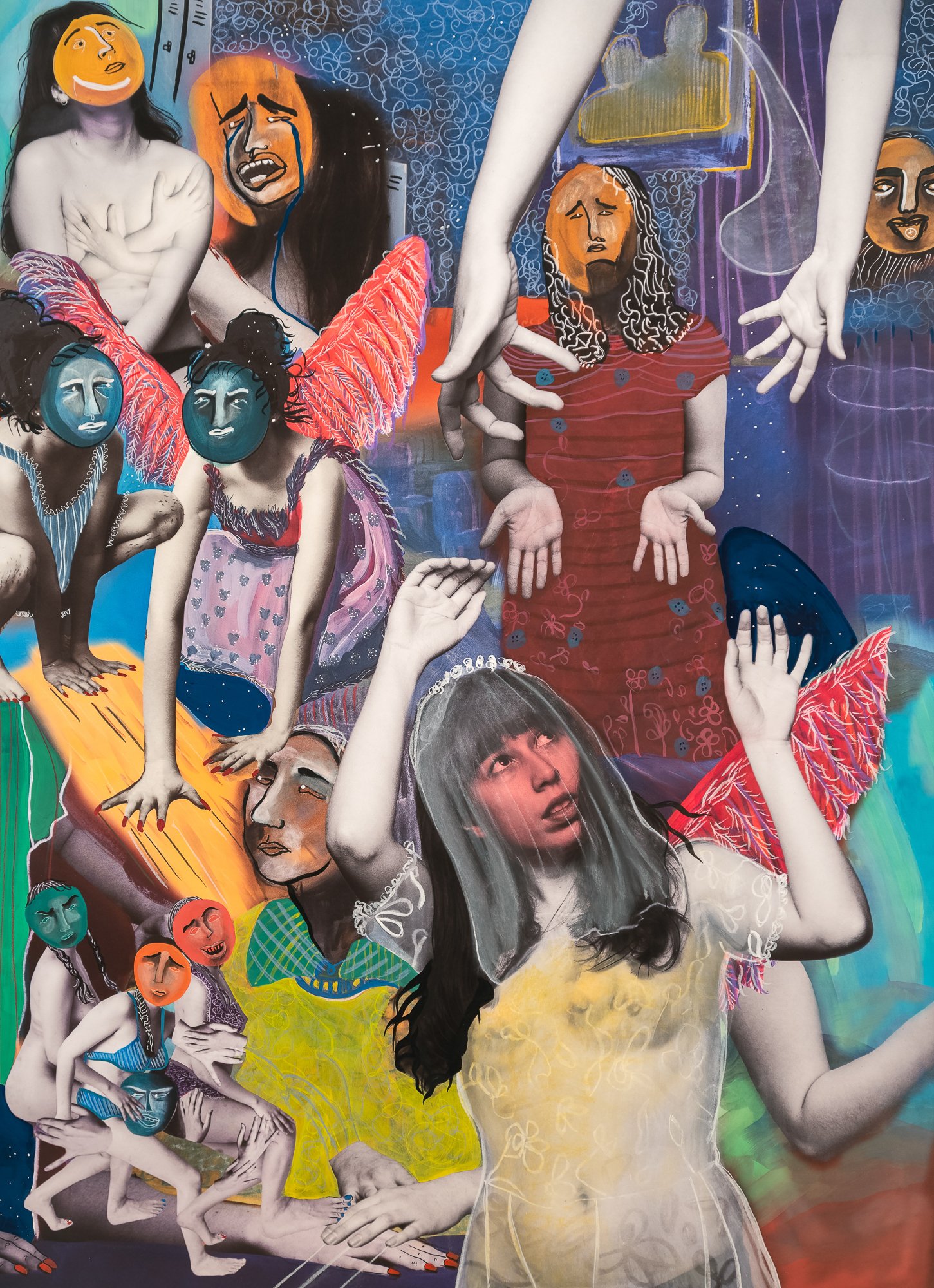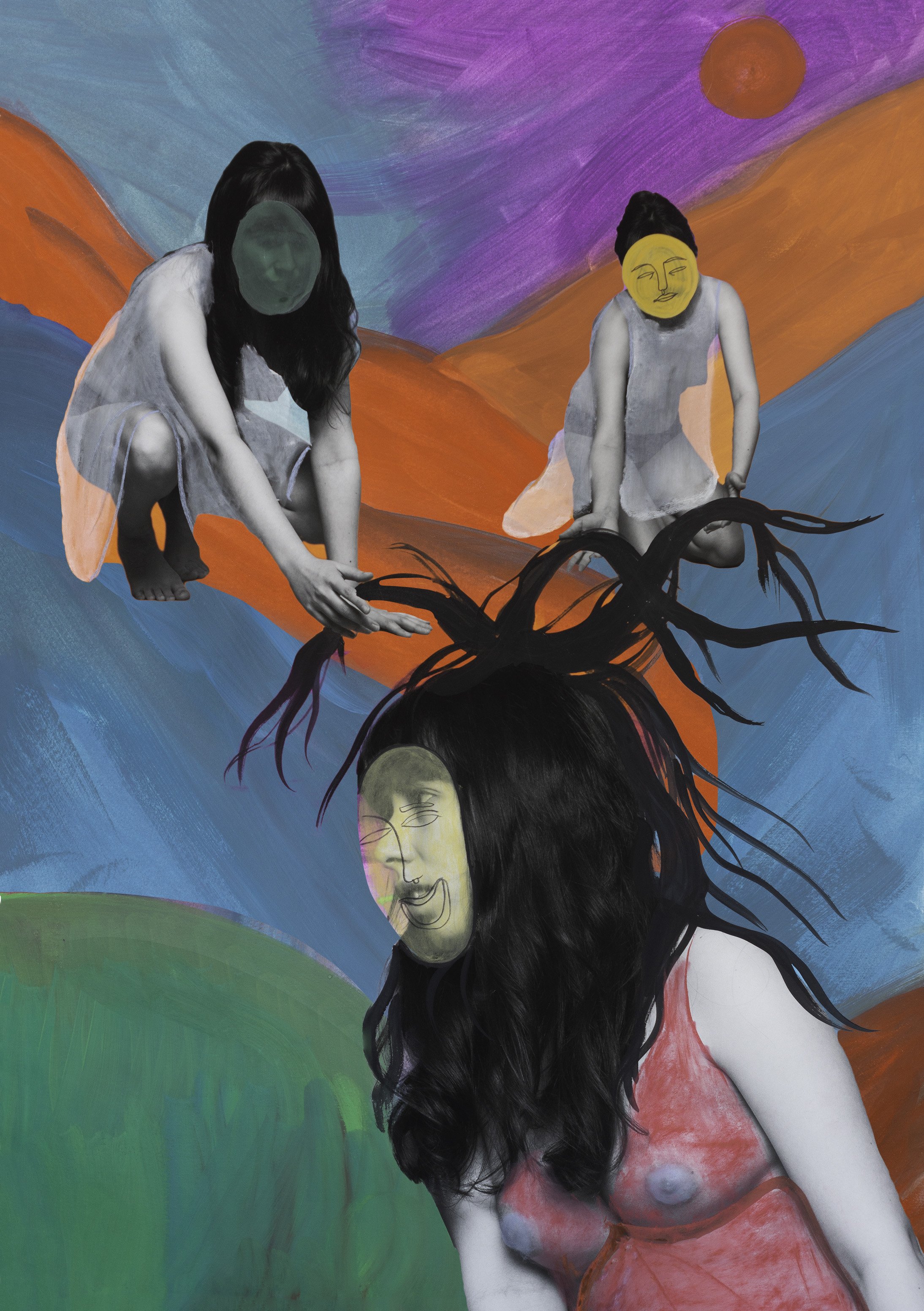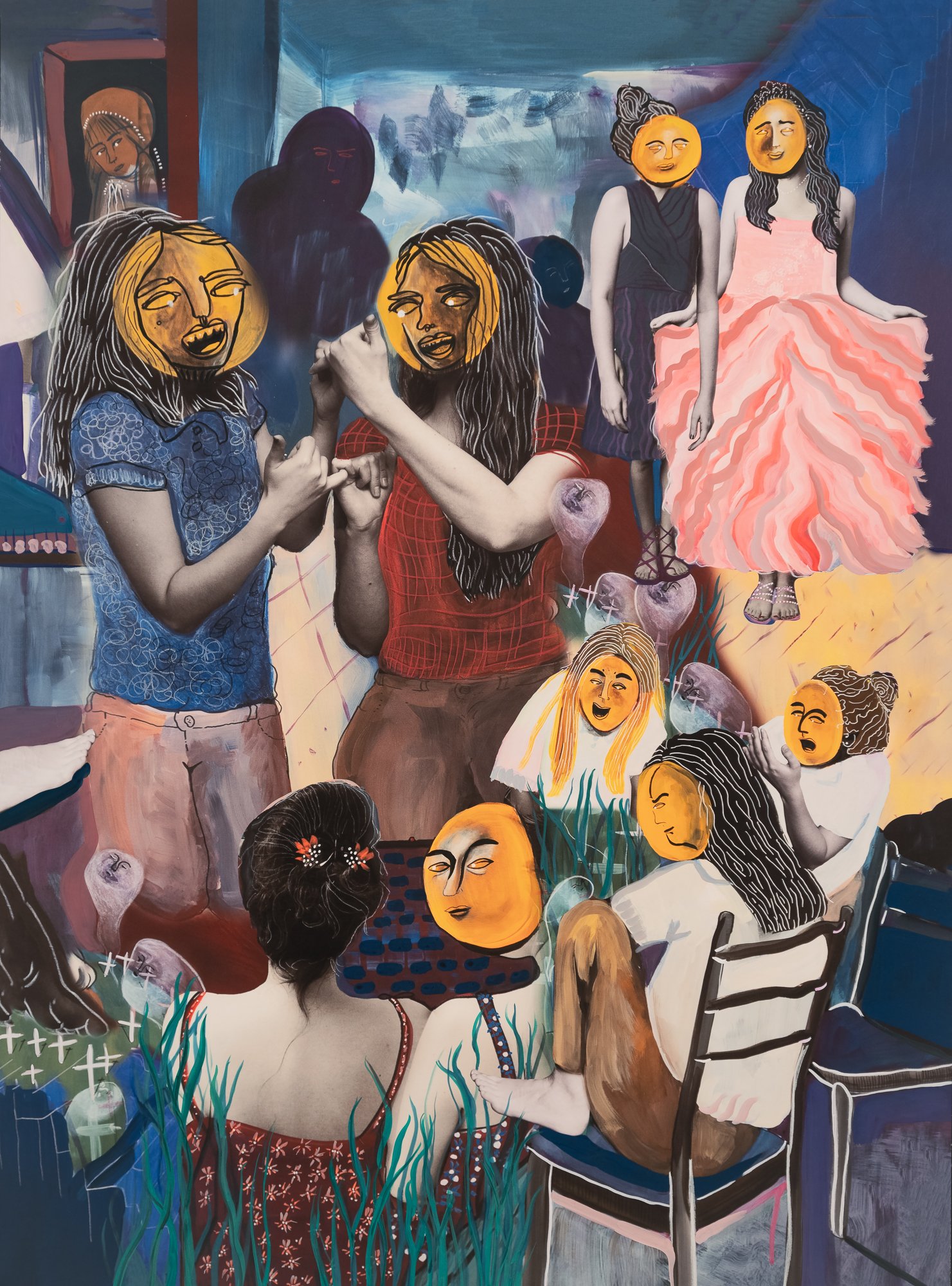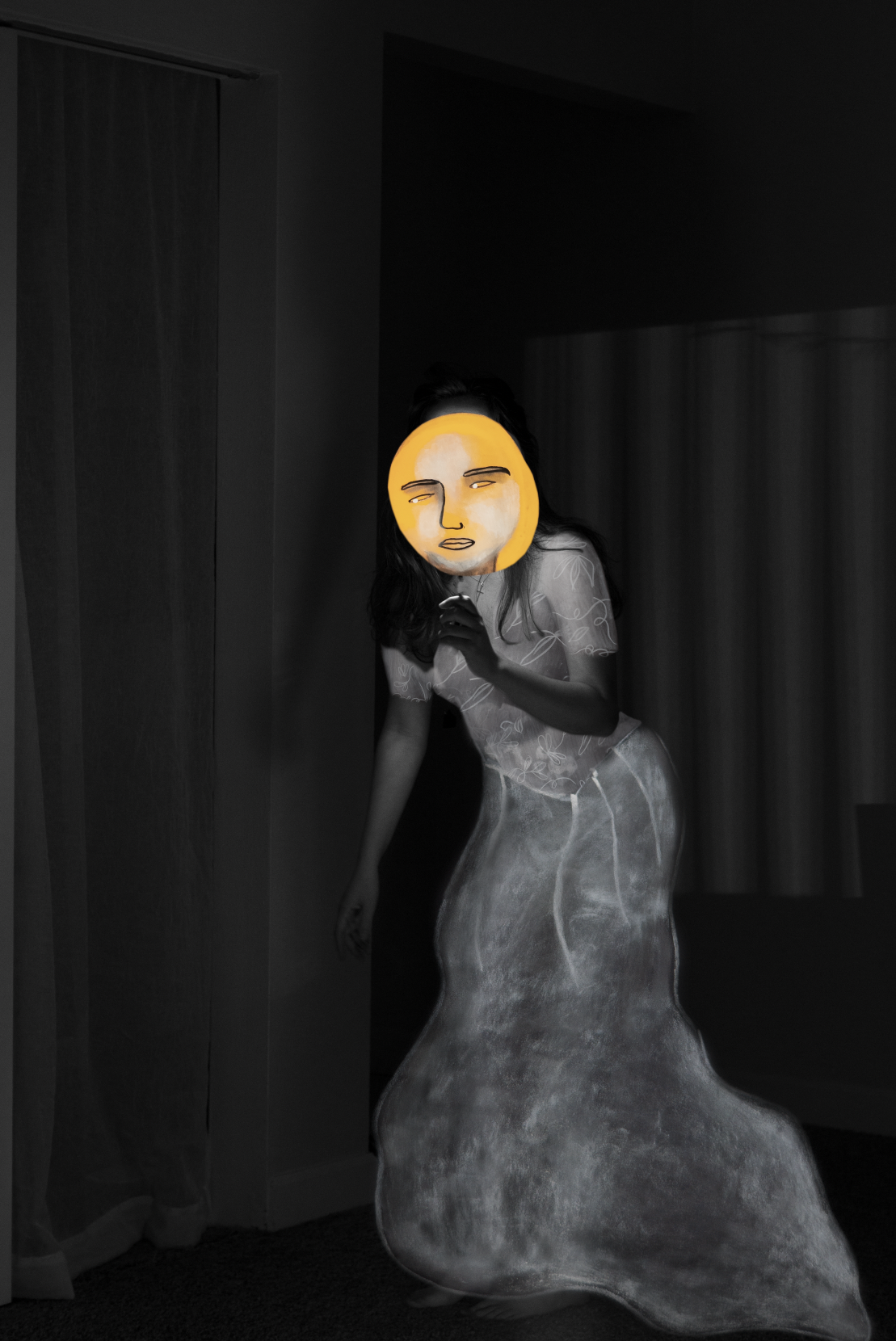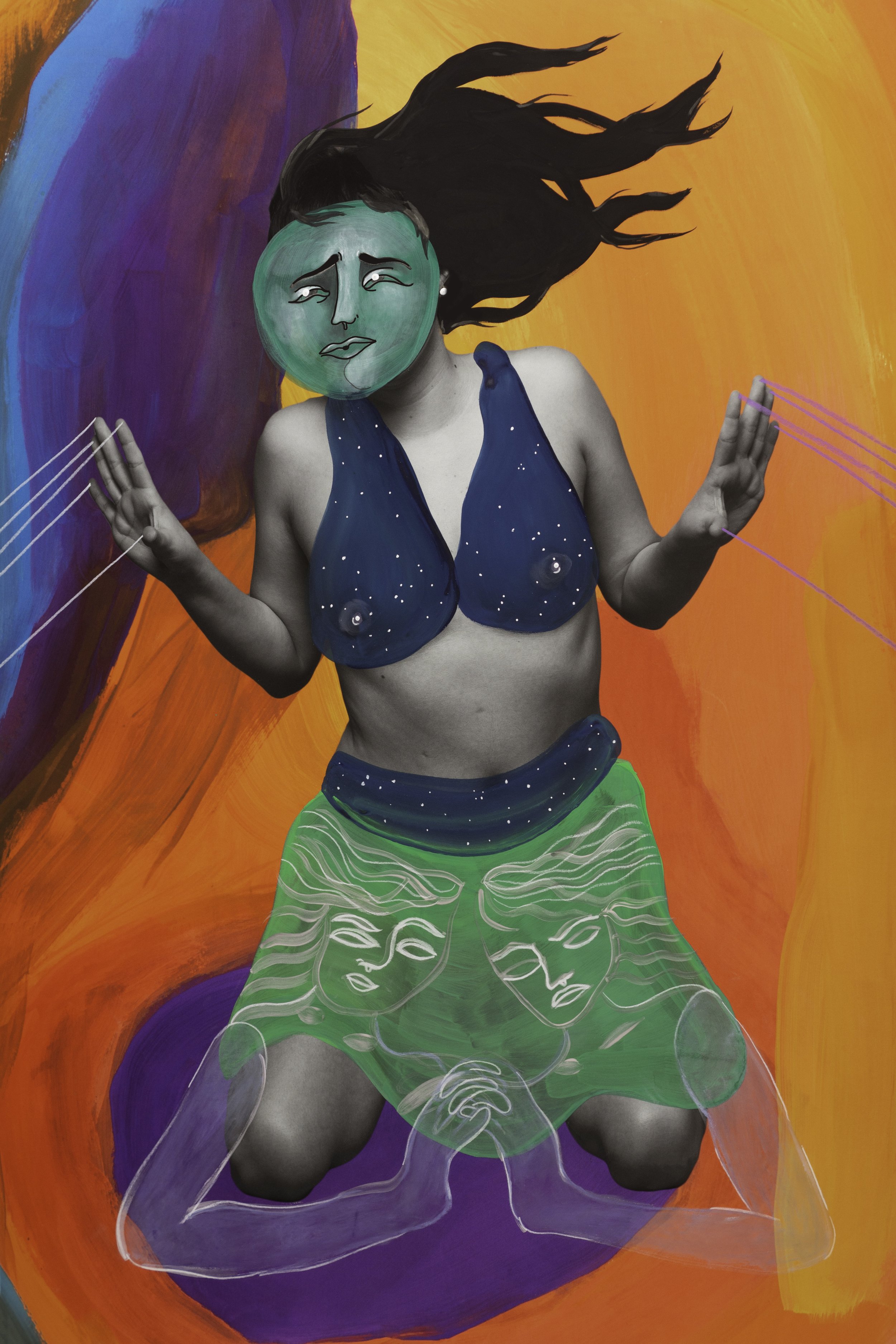Q&A: Liliana Guzmán
By Kelly Lee Webeck | May 19, 2022
Liliana Guzmán (American, b.1993) is an artist currently residing and working in Bloomington, Indiana. Liliana is a photographer and painter whose artwork entwines topics of the body, memory, sexuality, and the hidden landscapes of the self. Born in Baltimore, Maryland and raised in Indiana, Liliana completed her BA at Earlham College with a double concentration in Photography and French and Francophone Studies. Throughout high school and college she traveled abroad to Mexico, Ecuador, and France studying language and studio art. In May of 2021, Liliana completed her MFA in Photography at the Eskenazi School of Art, Architecture + Design at Indiana University Bloomington. Her photographic practice incorporates a wide range of techniques and mediums from film photography and alternative processes to digital photography, painting, and drawing. Through the recurring subject matter of hands, touch and gesture, Liliana’s artwork expresses touch as not only a formative and intimate experience but as one that establishes both internal and external connections within ourselves and those around us.
For this interview we have created educational resource materials! There are two documents included in one single PDF which can be used in multiple settings and we hope they spark fruitful discussion and inspire you and your students to create dynamic art pieces.
Observe, Analyze + Make: This observational worksheet is designed to be used with children and adults ages 7 and up. It can be used in a classroom setting as a reference to guide discussion around Guzmán's series Next to Myself. Families can also use it together while looking at the images included with Guzmán's interview to help you look closer and think about the meaning of the images.
Create + Make: This project sheet is designed to be used with artists and students ages 13 and up. It includes a list of the materials you will need and a step by step guide to allow you to create a piece of artwork in the style of Liliana Guzmán. There are even questions to help you or your students think about and develop the piece of art along the way. You may find it helpful in your classroom to begin with the observation worksheet before diving into this project.
Kelly Webeck: Hi Lili! I am so excited to catch up with you. The last time we saw each other was in 2018, while we were both in the photo MFA program at Indiana University. It was your first year and my last. When we were peers, I recall that your work was luscious and sensual, often about touch. You photographed intimate moments as well as hands and gesture, sometimes creating non-silver photographs as well as handmade books and Zines. Can you talk about why touch is such an important aspect of the human experience for you? What can you tell us about how you came to the body of work, Next to Myself?
Liliana Guzmán: Thank you so much Kelly for inviting me to talk with you and for giving me this amazing opportunity to share my artwork with the Strange Fire community! It is an honor. It’s funny to think that we met all the way back in 2018 and how quickly the time has gone by. This just goes to show how special the connections you make as a young artist really are!
Even though my practice has gone through some transformations since that first year in graduate school, touch has remained one of the threads that connects those early projects with my current one: Next to Myself.
In 2018, I was working with the 4x5 camera for the first time and was interested in creating portraits of romantic intimacy (series Touch/Fantasy). What I found was how often hands appeared as the focus in these images. Almost like characters of their own with unique emotions and expressions. I began to think more about the way hands impact certain memories and experiences. Think, for example, about the first time you held hands with someone, platonically or not, it’s a sensation that can stick with you. Not just because of your memory of that person, but that the strong feeling of connection is expressed through the hands. I wanted to try and visualize that feeling of touch through photography. In Next to Myself, this is how I found that paint was a way of highlighting the impact of touch through using colors, lines, and mark-making in addition to the photograph.
As I was doing research on the sense of touch, I remember reading about how historically it was considered a “lower” sense compared to the others. This was interesting to me because, as simple as it sounds, we relate to much of the world around us through using our hands. In my studio practice, for example, I like bookmaking, printing out photographs instead of keeping them filed away digitally, film photography, and writing pen to paper. All of these practices remind me of how being able to simply hold something can elevate its importance. Philosopher Byung-Chul Han has a new book titled Non-things: Upheaval in the Lifeworld (2022) where he specifically reflects on today’s society’s proclivities towards things that we cannot touch; data in the cloud, digital files, even social interactions through technology. As Byung-Chul Han emphasizes, the digital age creates the illusion that we are in “touch” with everything, when in reality our relationship with physical objects is lost.
This loss goes deeper than we realize. Through the reoccurrence of hands in my artwork, I hope to capture how we create meaning, memories, stories, and connection.
I know her, Palladium print, 2019
From Touch/Fantasy, I decided to turn the lens onto myself. This time, I was working towards visualizing the conscious and unconscious parts of myself through double exposure, again using the 4x5. I thought about if my dream-self would act differently than my waking self. I wondered what it would be like if these two parts of myself met. The double exposure and then triple exposure were really the first iterations of the visual inspiration behind Next to Myself ; having many different “parts of myself” interact in one space.
KW: Can you fill me in on what you have been doing since you finished graduate school? I saw that you attended Chico Review in March. How was that experience for you? Did you receive any feedback or make any connections that will help you drive your work forward in the next direction?
LG: Finishing graduate school in 2021 while the pandemic was still evolving was, like for millions of people, challenging and isolating (talk about lack of touch)! I knew it was very important to not only continue making art but keep momentum. I set personal goals like applying to at least five exhibitions per season. Through this, I was eventually granted my first solo exhibition at Creative Alliance in Baltimore! Having this exhibition to look forward to was a huge boost in motivation.
Earlier this year when I was notified of acceptance to the Chico Review, I was elated because I knew this was a great opportunity to keep moving and make new pieces for Next to Myself. This was also my first portfolio review and to be able to spend one week with a creative and passionate group in mountainous Montana was very exciting. Because I work with photography and painting, I was nervous about what kind of feedback I would receive, but I felt a lot of openness from each reviewer. There were comments about not having seen this type of work before, but that it was still able to resonate with them. This was amazing to hear. Mimi Plumb was one of my first reviewers and was so kind and receptive. She brought up comics which made me very happy because comics and graphic novels are a big inspiration for me. Sabiha Çimen, Ben Brody, and Rahim Fortune just to name a few, all had feedback that helped clarify what parts of Next to Myself stuck out and how to continue to harness the “punctum” found in certain pieces. I also spoke with reviewers about what Next to Myself might look like as an art book. Alongside the reviewers, the other attendees created an incredibly powerful atmosphere that really felt dedicated to uplifting and encouraging growth with each project that was shared.
This experience has taught me that part of being a working artist is about connecting to a creative community. Shortly after graduation, I was fortunate enough to be selected for the Lenscratch Student Prize 26 to watch which has also helped me connect with other artists!
KW: One of criticized aspects of photography is that it is reproducible. You can create multiple copies of images and editions. You have found a way of making your editions more unique, one of a kind photographic objects. Can you share some insights to the steps you take to create your photographic, painted pieces? Where do you source inspiration for your color palette? Tell us as well about the environments that we find your figures in. Who are these characters and where are they? Are these self-portraits?
I’m glad you brought up the idea of reproducible images because some of the best feedback that I received from the Chico Review was about elevating this work so that they become even more of an art object. As they are now, the collaging of the figures is done digitally and then I print out the image and paint directly onto the paper. It can be very hard to distinguish ink from paint on the final piece. Working with more physical layering of a collage is my next step in this project.
Confession, from the series Next to Myself, 36 x 48”, 2021
As far as process, each piece varies, but usually starts out with a memory, story or diary entry. For instance, in “Confession” I was thinking about how certain parts of myself formed through my attending a small Catholic school in the Midwest from fourth through senior year of high school. The gestures involved in Catholic mass and ritual were something that I wanted to reenact for the set-up of these self-portraits. Kneeling, hands clasped in prayer and raising hands up to bless not only elevated the “character” of hands and touch but also made me think about how these actions formed a part of myself. Once I decide on how to position the body and my hands, I take the photograph and print it out on paper and then apply paint.
The painted backgrounds allow me to place the figures in a kind of in-between world where some things are recognizable like walls of a room, floors etc. but also allow me to create more abstracted spaces. I am fascinated by synesthesia which is when the body interprets sensations through the stimulation of other senses. For instance, seeing a certain color when hearing a particular musical note. I wanted to create my own language of synesthesia where I think about what colors would emit from certain touches or emotions. In Cordón de seda, the woman is surrounded by a dark red space with orange behind the extended arm. The orange is the energy of the arm and supports the emotion of strength.
A final piece process will usually consist of the photograph, paint, rephotographing that print, collaging more figures onto the photograph digitally and then reprinting again. It’s a process of layers which I think also speak to the conceptual intent of this project where our whole self is one made from many parts formed by dreams, memories, identity, sexuality, culture and so on.
That being said, the figures in each piece are parts of myself interacting with one another and are self-portraits. If the parts that make up who you are were to meet, there may be some that are more maternal or bold and others more reserved and fragile. Walt Whitman said it best in Song of Myself where it is written “I contain multitudes,” and I do believe that is true of each human being.
KW: How do you see yourself fitting into the Latin-x community? What is your relationship with the Spanish language? How does the Latinx community influence your work?
LG: We know that the Latinx community includes multiple identities from diasporic origins to different Latinx experiences in the United States. My story is one of those where bi-culturalism is the predominant factor but like any other Latinx artist, I use my artwork to uplift and highlight the influence of our heritage and continue to place past, present, and up-and-coming voices to the forefront of the contemporary art world.
Next to Myself stemmed from my bi-cultural Colombian American upbringing. Like many bi-cultural children, one can feel a duality between not feeling one hundred percent American or one hundred percent Latinx. The ways in which one relates to these two groups manifests differently. Not too long ago the title of an article caught my eye, it read, “Latino but not fluent in Spanish? The litmus test still plagues many” and this for me personally, the question of language and fluency is especially a characteristic of how I have placed my “American” self at odds with my “Latina” self. Though I have proficiency in Spanish, I feel timid in speaking Spanish because of my American accent. Even though that might sound silly, it is easy for me to not feel “Colombian enough” because I speak English more often in my family and daily life than Spanish. Through Next to Myself I hope to reach audiences who relate to being parts of two different worlds or more than two, whether that be American-Latinx like myself or finding oneself in the in-between of other identities such as gender or sexuality.
Las Malas, from the series Next to Myself, 36 x 48”, 2021
KW: I have always been inspired by how much of the world you seek inspiration from. You spend a lot of time watching films and reading literature, observing the world around you and drawing in your sketchbook. On top of this, you are learning French independently! How does language, both visual and written influence your artistic practice and fit into your understanding of your work and your connections with people?
LG: Thank you, Kelly! Whether I am reading a new poem, watching a movie, or learning a language, each of these experiences open up another path. Before you know it, you are in a web of different ways of seeing and realize that everything is connected in one way or another. As an alumna from Earlham College, I really appreciate how my liberal arts education emphasized the importance of exploration within the humanities. Being able to learn about and expose myself to different visual and written languages helps solidify how I can cultivate my own way of expression. In doing so, I hope to deepen the connection my artwork can have with an even larger audience.
I also find how helpful it can be to approach a specific photograph or painting in different ways. For instance, writing short prose inspired by one of my pieces can help spark where I want to take the next step. Language has also taught me to step outside of my own points of view and listen to new ways of seeing and experiencing the world. In other words, learning a new language (written and visual) helps me think in different ways which conscious or unconsciously enriches how I make my artwork.
KW: Since we are working together to create educational resources to go along with your interview, can you share a bit about your teaching practice? How does working with young people change how you see the world? Children can be so bold an honest, it must be inspiring!
LG: As I have gotten older, it’s easy to be overly critical with myself and my art. What I have learned working with my young students is that they make art without limiting themselves. They dive in and even though mistakes are made it is not something to dwell on. There is a certain freedom of imagination and reminder to just play. I am usually amazed at how innovative children are with materials. Sometimes I will do a demo, but usually I will introduce the project and then allow my student to approach the materials in their own way. Children love to experiment when making art and that is something I take to my studio practice; there are so many ways to do one thing, you don’t have to put yourself in a box! With experimenting, not every piece you make has to be a masterpiece. My students remind me to enjoy making something in the moment, regardless of the outcome.
When I work on creating projects to teach, and this is true for both at the university level and at the elementary level, I focus on what I call the “practical and poetic.” The practical, meaning specific skills and techniques that students will gain from the project. The poetic signals the expression of ideas, feelings, emotions, connections etc. through their own visual language. By exposing students to the importance of synthesizing these two facets of the creative process, they are challenged to think more deeply about the power behind a work of art. One exercise I have developed is called inventing metaphor. After sharing a presentation and short video on metaphor, students are given a simple phrase such as “last night,” “returning home”, or “getting lost.” They are then challenged to visually construct their own metaphor through either creating a collage or a photograph inspired by one of the phrases that they pick at random. Another example of pedagogical strategies that I use is taking into consideration creating tactile projects that let the students think about using their hands to build, compose, and organize. Making one-page zines, for instance, is a lesson that I love to start out with because I want to share with my students that one piece of paper can be folded into a physical art object.
St. Jude Tree, from the series Next to Myself, 30 x 40”, 2021
KW: Finally, you have your first solo exhibition coming up at Creative Alliance in Baltimore. Tell us more about this.
I am so excited to be having my first solo exhibition at Creative Alliance! Baltimore is a special city to me because it is where my mother was born, where my parents met and where I spent my early childhood. Being able to come back to the city and share my artwork is such a wonderful opportunity and I’m so thankful to Creative Alliance for granting me the space and support.
I will be sharing nine pieces from my series Next to Myself: Visualizing the Multiple Layers of the Latinx Female Body and Experience. As I have mentioned throughout the interview, this series explores the different layers that make up the self. The exhibition will be on view in the Amalie Rothschild Gallery from May 21st until July 3rd, 2022. What is unique about Creative Alliance is that there are two gallery spaces so in addition to my show, there will also be the We Are Present exhibition which highlights the artwork of indigenous and indigenous-identifying artists.
I will be at Creative Alliance on July 1st in conjunction with first Friday events and will give an artist talk. Everything is free and open to the public!
If you are not in the Baltimore area, I will have exhibition catalogs available on my website that detail each piece in the exhibition. I hope you can take a look!
KW: Thank you for taking the time to speak with us.
LG: Thank you so much Kelly for your thoughtful and wonderfully reflective questions and Strange Fire Collective for offering this incredible platform.
All images © Liliana Guzmán


